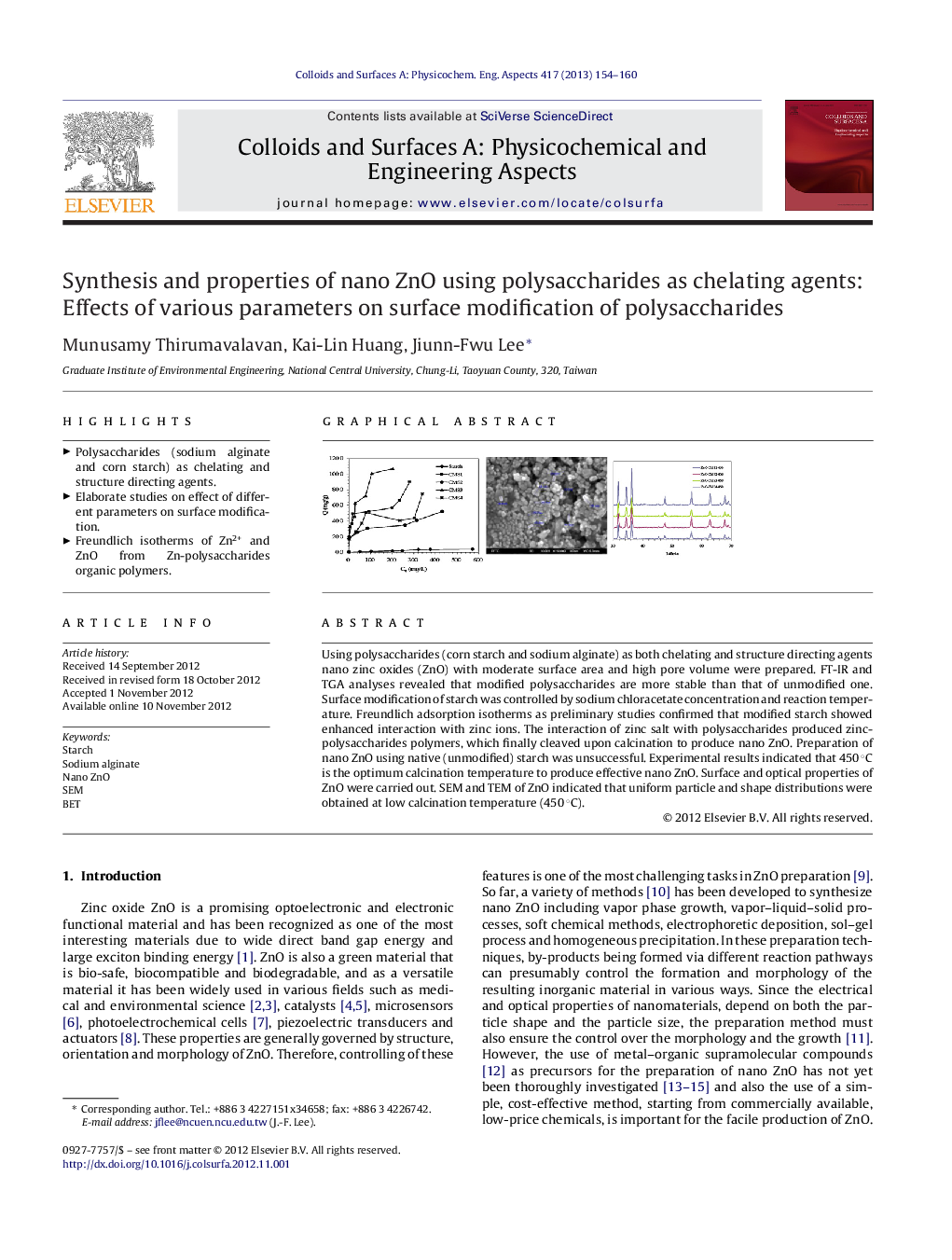| Article ID | Journal | Published Year | Pages | File Type |
|---|---|---|---|---|
| 593814 | Colloids and Surfaces A: Physicochemical and Engineering Aspects | 2013 | 7 Pages |
Using polysaccharides (corn starch and sodium alginate) as both chelating and structure directing agents nano zinc oxides (ZnO) with moderate surface area and high pore volume were prepared. FT-IR and TGA analyses revealed that modified polysaccharides are more stable than that of unmodified one. Surface modification of starch was controlled by sodium chloracetate concentration and reaction temperature. Freundlich adsorption isotherms as preliminary studies confirmed that modified starch showed enhanced interaction with zinc ions. The interaction of zinc salt with polysaccharides produced zinc-polysaccharides polymers, which finally cleaved upon calcination to produce nano ZnO. Preparation of nano ZnO using native (unmodified) starch was unsuccessful. Experimental results indicated that 450 °C is the optimum calcination temperature to produce effective nano ZnO. Surface and optical properties of ZnO were carried out. SEM and TEM of ZnO indicated that uniform particle and shape distributions were obtained at low calcination temperature (450 °C).
Graphical abstractFigure optionsDownload full-size imageDownload as PowerPoint slideHighlights► Polysaccharides (sodium alginate and corn starch) as chelating and structure directing agents. ► Elaborate studies on effect of different parameters on surface modification. ► Freundlich isotherms of Zn2+ and ZnO from Zn-polysaccharides organic polymers.
